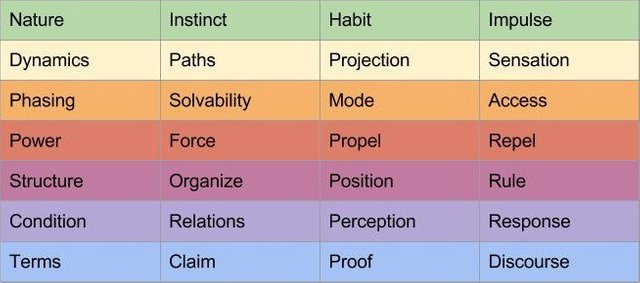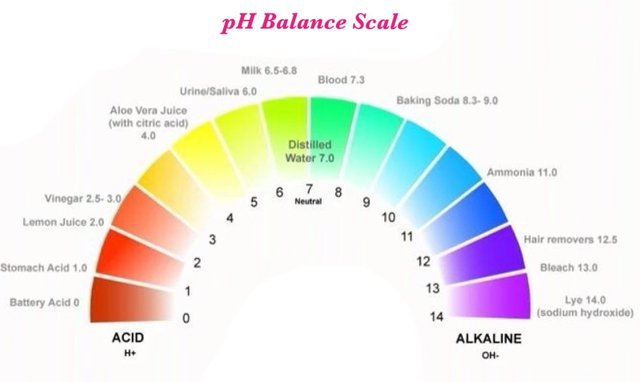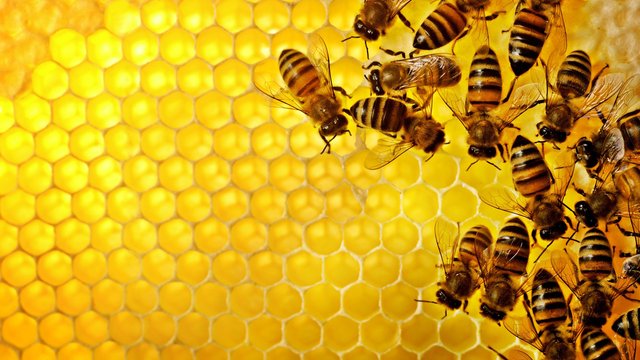Rule of Sevens (Exclusive)
 Nature of Observed Reality
Nature of Observed Reality
I originally posted this graphic with a medium post The Affect Effect.
One might say that from the nature to terminology there are 7 steps of either mistakenly or accurately describing an object, entity, subject, system or event.
pH Balance
Hermetic Principles
- Mentalism - All is mind, mind is all.
- Correspondence - Everything is connected.
- Vibration - All energy is vibration.
- Polarity - There is more than one side.
- Rhythm - There is a timely pattern.
- Cause & Effect - There is direction to events.
- Gender - Each is engendered with certain qualities.
"THE ALL IS MIND; The Universe is Mental."--The Kybalion.
"As above, so below; as below, so above."--The Kybalion.
"Nothing rests; everything moves; everything vibrates."--The Kybalion.
"Everything is Dual; everything has poles; everything has its pair of opposites; like and unlike are the same; opposites are identical in nature, but different in degree; extremes meet; all truths are but half-truths; all paradoxes may be reconciled."--The Kybalion.
"Everything flows, out and in; everything has its tides all things rise and fall; the pendulum-swing manifests is everything; the measure of the swing to the right is the measure of the swing to the left; rhythm compensates."--The Kybalion.
"Every Cause has its Effect; every Effect has its Cause; everything happens according to Law; Chance is but a name for Law not recognized; there are many planes of causation, but nothing escapes the Law."--The Kybalion
"Gender is in everything; everything has its Masculine and Feminine Principles; Gender manifests on all
planes."--The Kybalion
Observer
- All things said or done - are so by an observer to another observer (which may also be one and the same).
- The observer holds in mind (1)the thing being said or done (2) and the context in which the observer is in; this allows for independent interactions.
- The observer is able to interact with the observed by relations and units.
- In observation, an entity is only an entity when the observer may describe it by enumeration of potential or actual interactions in relation to the observation.
- A set of interactions in which an entity may enter is that entity's domain of interaction.
- The observer may describe itself via specifying its domain of interactions as independent entities.
(7) The observer is a living system and an understanding of cognition as a biological phenomenon must account for the observer and his role in it.
- Living System
- Living systems exist in an ambiance as units of interactions. In the biological perspective they cannot be understood as independent of the niche: which is the interactive ambiance; nor is it possible to define the niche as independent of the living systems that specify it.
- They are characterized by exergonic metabolism, growth and internal replication; organized in a circular process that allows for change in the manner the circularity is maintained, but not at the loss of the circularity.
- The circularity is what makes living systems into units of interactions and allows it to keep its identity throughout different interactions.
- Living systems are self-referring; the units of interactions are of functional significance for organization.
- They cannot enter interactions that are not specified by their organization because there circularity is continuously internal.
- The niche is detailed by the types of interactions which an organism may enter.
- Each unit of interaction may participate in similar, more encompassing units of interactions - if doing so does not require the unit to lose its identity.
Thus, a particular self-referring system may have the circular organization of a living system or partake functionally of the circular organization of its components, or both. The society of bees (the honey producing bees) is an example of the third order self-referring system of this kind; it has a circular organization superimposed on the second order of self-referring systems that are the bees, which in turn have a circular organization superimposed on the first order of living systems that are the [bees'] cells; all three systems with the domains of interactions are subordinated both to the maintenance of themselves and to the maintenance of others.





This post has been ranked within the top 80 most undervalued posts in the first half of Jan 11. We estimate that this post is undervalued by $3.73 as compared to a scenario in which every voter had an equal say.
See the full rankings and details in The Daily Tribune: Jan 11 - Part I. You can also read about some of our methodology, data analysis and technical details in our initial post.
If you are the author and would prefer not to receive these comments, simply reply "Stop" to this comment.